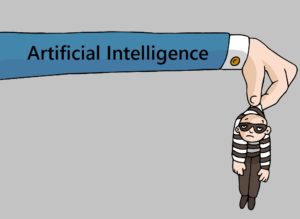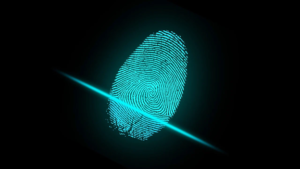
The Long (and Artificial) Arm of the Law: How AI is Used in Law Enforcement

(John T Takai/Shutterstock)
Artificial intelligence. Nowadays, it seems like it’s everywhere. From the computers we use at work, to the cars we drive, to the self-checkout stations and ATMs we use practically every day.
Now, not only do we speak to, and through, our technology, but our technology is also speaking back. It helps us in our banking, our healthcare, our entertainment, and beyond.
But today, new uses are being found for artificial intelligence (AI), uses designed to keep us safe and well. In fact, it may well turn out that what AI is actually best at is not keeping us productive or occupied. It may be that what AI is best at is keeping us, as well as our men and women in blue, alive.
Keeping the Watch
When it comes to exploring the power and potential of AI, today’s big tech titans are all in. Companies including Google, Facebook, Apple, and Amazon, those behemoths of innovation, are relentlessly pouring time and treasure into developing the systems that monitor, study, predict, and intervene in nearly every aspect of daily life.
To be sure, it’s the vast commercial potential of these endeavors that’s driving so much of the innovation. But there’s another side of the coin. Because the same data that can be used to learn how to sell to you can also be used to learn who is up to no good.
For example, AI might be used to help police officers identify high-risk areas, individuals, or situations, using applications already proving highly effective in the healthcare industry. Using the power of predictive analytics, healthcare providers can quickly diagnose patients, assess health risks, and formulate treatment plans. They can even harness the power of these technologies to develop public health protocols, as in the current global effort to contain the COVID-19 virus.
And it is that same basic AI technology that officers are also beginning to use to make informed, life-or-death decisions practically in the blink of an eye. For instance, AI systems frequently use remote surveillance cameras and image enhancement applications to get a view of crime scenes or accident sites that is far beyond anything the human eye is capable of.
Plus, the power of today’s facial recognition technologies makes it nearly impossible for even the most cunning and cleverly-disguised criminal to evade the watchful gaze of the AI. At least not for very long.
Where No Officer Has Gone?
AI systems can not only nearly instantaneously assess situational risk, but they can also be programmed to act in highly dangerous situations. For example, AI systems might be dispatched to the site of a threat, an accident, or a natural disaster to rescue or render aid to victims or to contain a potential suspect. All without putting human officers at risk.
This can also mean being able to find, collect, and, at times, even analyze evidence in situations and environments that would be impossible, or simply overwhelming, for a human investigator. An example might be a massive wreckage site, as in a plane crash, or a site where the crime scene is contaminated by debris or toxins, as was the case at Ground Zero in New York City.
On the Road
Law enforcement isn’t just using AI to fight the kinds of catastrophic crimes that make national and international news. It’s also being used for the more mundane, but by no means less important, aspects of law enforcement.
For instance, AI technologies are now being used by police forces nationwide to detect patterns of harsh braking or rapid acceleration on our roads, highways, and interstates. That matters because it’s going to help law enforcement identify the areas where unsafe driving is most likely to occur, and to pinpoint the most likely offenders.
And what all that boils down to is artificial intelligence making America’s roadways safer for us all.
To Protect and Serve
Like most every aspect of our modern lives, the coronavirus pandemic has also changed the nature of modern law enforcement. It has added to the burdens of our police forces the immense responsibility of protecting public health.
This includes enforcing quarantines and lockdowns, protecting properties left largely abandoned by the outbreak, and ensuring safe social distancing in essential public gatherings. Now, as unemployment and food insecurity surges, an increasingly fearful and restless public is losing patience.
Rallies and protests are becoming more numerous. The public’s compliance with cities’ distancing regulations is waning. And, as always, America’s police forces are right there at the center of it all, striving to protect both the law and the public it serves.
AI technologies are proving to be a powerful ally in these efforts as well. Every day, new and better tools are emerging to help public officials, including law enforcement, gather the essential data they need to protect the public, such as identifying current hot zones and predicting future ones.
This helps law enforcement to determine where to focus their energies, both in resources and manpower, to prevent an already overburdened system from crumbling completely.
The Takeaway
The power of artificial intelligence has only just begun to be recognized in recent years. However, the technology has quickly evolved to become a staple of modern daily life. Perhaps nowhere is the promise of AI greater, however, than in its use as a tool for law enforcement. Police forces are increasingly using AI to facilitate crime investigation, including the collecting and analysis of crucial evidence. In addition, the predictive capabilities of AI can help law enforcement make informed, split-second decisions when lives are at stake. These technologies can even be used in high-risk situations, such as in victim rescue and recovery or in apprehending suspects. Finally, AI is proving particularly useful in the efforts of police to protect the public health in the face of the coronavirus pandemic, including helping them to identify current and future virus hot zones. This allows them to direct their life-saving forces to where they are needed most.
About the author: Luke Smith is a writer and researcher turned blogger. Since finishing college he is trying his hand at being a freelance writer. He enjoys writing on a variety of topics but technology and digital marketing topics are his favorite. When he isn’t writing you can find him traveling, hiking, or gaming.
Related Items:
How Data Analytics Is Helping to Fight Human Trafficking
Analytics Set to Take Down ‘Felony Lane’ Gang
Predictive Analytics, Visualization Enlisted in Crime Fight































